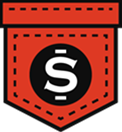Designing T-Shirt Art

You don’t have to be an artist to design t-shirt art. Anyone can create eye-catching designs on their computer and transfer them to blank t-shirts. It all comes down to vector art. Imagine you’re given an assortment of shapes (triangle, circles, squares, etc.) of varying colors and asked to create a random design. How easy is that? That’s essentially vector art. Even if you’re trying to model real world objects (instead of abstract designs), vector art works. Look at a car from the side. The wheels are just circles, and the windows and body are rectangles and triangles.
The exact opposite of vector art is raster graphics (photographic images). The only way to break down raster art is on the pixel level. You can vectorize the image using special software and turn it into vector art, but then it loses all characteristics of being photographic. Vector art is not only simple to create, but it is extremely scalable. The same 3x3 inch vector art you create can scale to a huge wall mural without a single loss in clarity. This isn’t the case for raster graphics. The more you scale raster-based work, the more blocky and blurry they get. Vector art is also very easy to manipulate. You can move, distort and break apart elements of your design in a few mouse clicks. There is tons of software out there that you can use to create vector art. Illustrator and CorelDRAW are the two most popular ones. If these are outside of your budget, there are also a number of free ones available for download. Check out this link on Wikipedia for a list of vector design software.
After you’ve come up with a design on your computer, it’s time to take it to the next level. Looking at the art on your computer screen is not the same as looking at it on a t-shirt. So print out your design and tape it to a t-shirt. Have a friend wear it, or model it yourself in front of a mirror. Does your design still look good in practicality? If it doesn’t, then maybe it just needs a few tweaks. Make sure to try out several variations of shapes and colors. Don’t go overboard with the colors though. Try to keep the color range to something manageable (a few colors at the most). The more colors you use, the more expense it will be to transfer your design to a t-shirt. Don’t forget that the color of your t-shirt plays a role in the look of the design as well. For example, a blue t-shirt is a great backdrop for an ocean-based design.
When you’re satisfied with the look, then it’s time for printing. There are basically two methods of screen printing your t-shirt design. The simplest method is called spot color separation. It’s a technique of breaking apart a design into separate layers by colors, a necessary step for screen printing as each layer represents a different a different screen and ink color. This is not a technique for printing raster graphics. If your design is photographic in nature, then the traditional four color process separation is what you need. This is the CMYK model where an image is broken down into Cyan, Magenta, Yellow and Black. As opposed to spot color separation where the layers are simply stacked to produce the final design, the four color process blends the different layers together in differing proportions to achieve millions of colors.
Vector art is easy to create and transfer to t-shirts. The nature of the technique lends itself so well to screen printing. So what are you waiting for? Go make some vector art!









